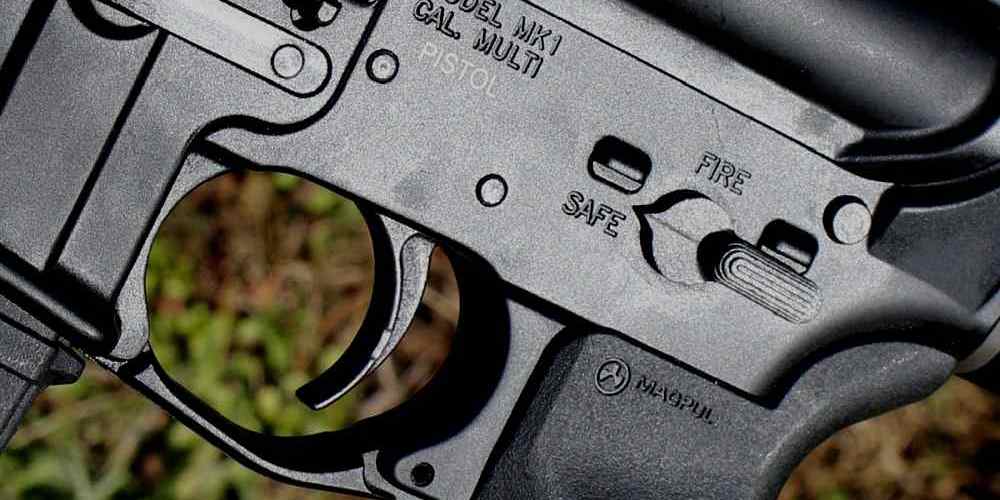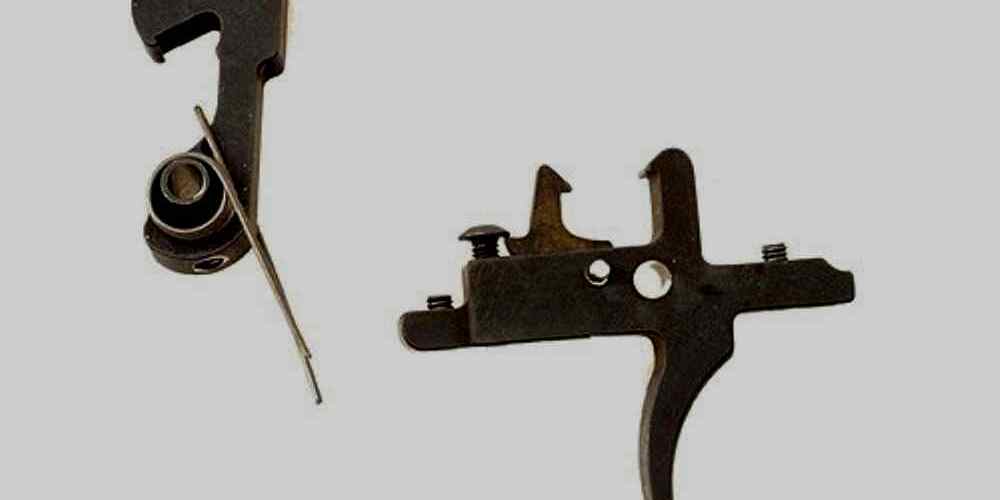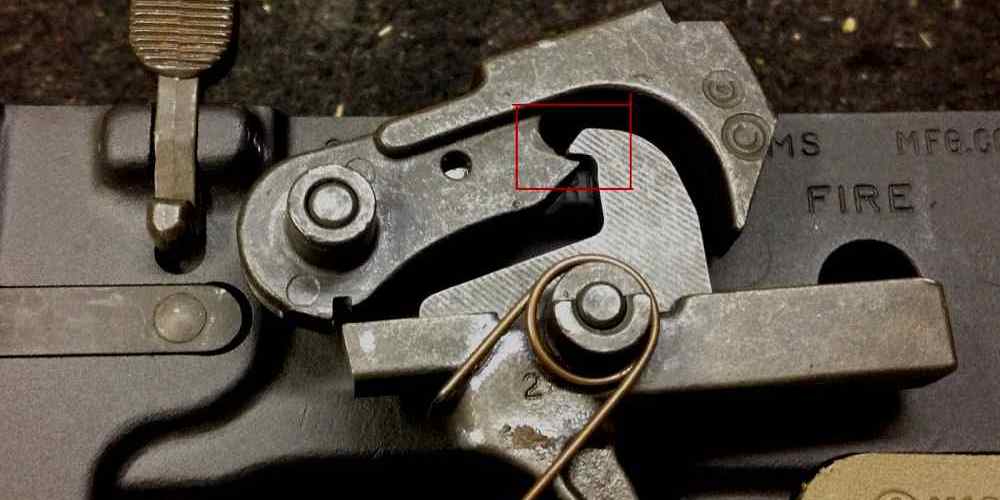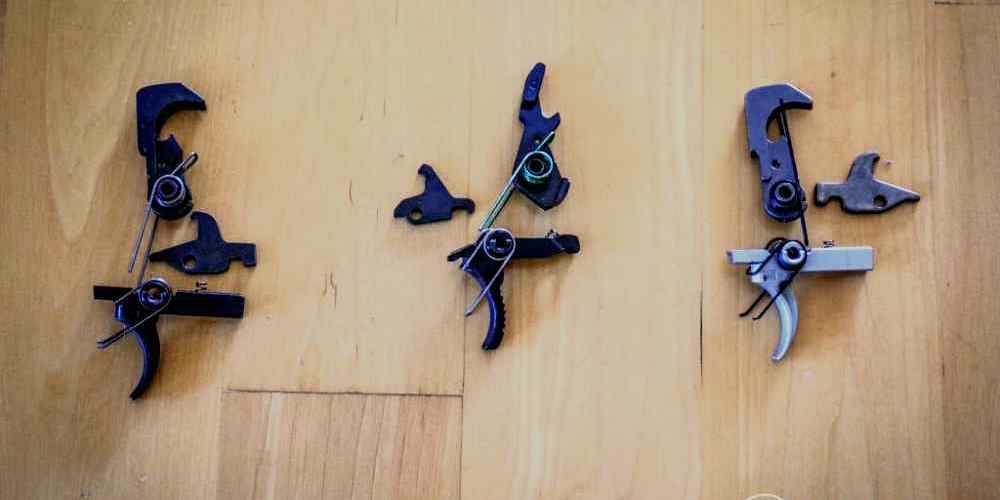“Fine-tune your shooting experience with our guide to AR15 trigger sensitivity.”
Soft vs. Hard Triggers: Understanding the Difference
When it comes to AR15 triggers, one of the key factors to consider is the sensitivity of the trigger. This sensitivity can be categorized into two main types: soft triggers and hard triggers. Understanding the difference between these two types of triggers can help you make an informed decision when choosing the right trigger for your AR15.
Soft triggers are characterized by a light pull weight, meaning that less force is required to pull the trigger and fire the gun. This can result in a smoother and more precise shooting experience, as the shooter does not have to exert as much force to fire the gun. Soft triggers are often preferred by competitive shooters and those who prioritize accuracy and precision in their shooting.
On the other hand, hard triggers have a heavier pull weight, requiring more force to fire the gun. While this can make it more difficult to achieve precision shots, hard triggers are often favored by those who prioritize safety and reliability in their shooting. The heavier pull weight can help prevent accidental discharges and ensure that the gun only fires when intended.
One of the main factors to consider when choosing between a soft trigger and a hard trigger is your shooting style and preferences. If you prioritize accuracy and precision in your shooting, a soft trigger may be the better option for you. However, if safety and reliability are your main concerns, a hard trigger may be more suitable.
It is also important to consider the intended use of your AR15 when choosing a trigger sensitivity. For example, if you plan on using your AR15 for competitive shooting or long-range shooting, a soft trigger may be more beneficial. On the other hand, if you plan on using your AR15 for hunting or self-defense, a hard trigger may be more appropriate.
Another factor to consider when choosing between a soft trigger and a hard trigger is your level of experience and comfort with shooting. If you are a beginner or have limited experience with shooting, a soft trigger may be easier to handle and control. However, if you are a more experienced shooter and are comfortable with handling a heavier trigger pull, a hard trigger may be a better fit for you.
Ultimately, the decision between a soft trigger and a hard trigger comes down to personal preference and shooting style. It is important to test out different triggers and see which one feels most comfortable and natural for you. Remember that trigger sensitivity is a crucial factor in your shooting experience, so take the time to find the right trigger for your AR15.
In conclusion, understanding the difference between soft triggers and hard triggers is essential when choosing the right trigger sensitivity for your AR15. Consider factors such as your shooting style, intended use, experience level, and personal preferences when making your decision. By taking the time to find the right trigger for your AR15, you can enhance your shooting experience and improve your overall performance.

The Importance of Trigger Sensitivity in AR15 Rifles
When it comes to shooting accuracy and precision, the trigger sensitivity of your AR15 rifle plays a crucial role. The trigger is the mechanism that releases the firing pin, igniting the cartridge and propelling the bullet out of the barrel. The sensitivity of the trigger determines how much pressure is required to fire the weapon, and this can have a significant impact on your shooting performance.
There are two main types of triggers commonly found in AR15 rifles: soft triggers and hard triggers. Soft triggers require less pressure to fire the weapon, making them easier to shoot quickly and accurately. Hard triggers, on the other hand, require more pressure to fire the weapon, which can make them more difficult to shoot accurately, especially for beginners or those with weaker hand strength.
Soft triggers are often preferred by competitive shooters and those who prioritize speed and precision in their shooting. The light pull weight of a soft trigger allows for quick and easy shooting, making it ideal for rapid-fire situations or shooting competitions where split-second timing is crucial. Soft triggers also tend to have a smoother pull, which can help improve accuracy by reducing the chances of jerking or pulling the trigger off target.
However, soft triggers can also be a safety concern, especially for inexperienced shooters or those who are not accustomed to the light pull weight. Accidental discharges can occur if the trigger is too sensitive, leading to potentially dangerous situations. It is important to practice proper trigger discipline and safety precautions when using a soft trigger to minimize the risk of accidental firing.
Hard triggers, on the other hand, require more pressure to fire the weapon, which can make them more challenging to shoot accurately, especially for those with weaker hand strength. However, hard triggers are generally considered to be safer than soft triggers, as they are less likely to accidentally discharge due to their heavier pull weight. Hard triggers are often preferred for hunting or tactical shooting, where precision and control are more important than speed.
Finding the right balance between trigger sensitivity and safety is crucial when choosing a trigger for your AR15 rifle. It is important to consider your shooting style, experience level, and intended use for the rifle when selecting a trigger. Some shooters may prefer a soft trigger for its speed and ease of use, while others may opt for a hard trigger for its added safety and control.
Ultimately, the best trigger for your AR15 rifle will depend on your personal preferences and shooting needs. It is recommended to test out different triggers and see which one feels most comfortable and natural for you. Remember to always practice proper gun safety and handling techniques, regardless of the trigger sensitivity of your rifle. With the right trigger and proper training, you can improve your shooting accuracy and performance with your AR15 rifle.
Pros and Cons of Soft Triggers in AR15 Rifles
When it comes to AR15 rifles, one of the key components that can greatly affect the shooting experience is the trigger. The trigger is what allows the shooter to fire the rifle, and its sensitivity can have a significant impact on accuracy and overall performance. In the world of AR15 triggers, there are two main categories: soft triggers and hard triggers. Each type has its own set of pros and cons, and understanding the differences between them can help you make an informed decision when choosing a trigger for your AR15 rifle.
Soft triggers, also known as light triggers, have a lower pull weight than hard triggers. This means that less force is required to pull the trigger and fire the rifle. Soft triggers are often favored by competitive shooters and those who prioritize accuracy and precision. The light pull weight of a soft trigger allows for quick and easy trigger manipulation, which can result in faster follow-up shots and improved shooting performance.
One of the main advantages of a soft trigger is its ability to enhance shooting accuracy. With a light trigger pull, shooters can more easily control their shots and maintain proper sight alignment. This can be especially beneficial in high-pressure situations or when shooting at long distances. Additionally, the smooth and consistent feel of a soft trigger can help reduce shooter fatigue and improve overall comfort during extended shooting sessions.
However, soft triggers also have their drawbacks. One of the main concerns with soft triggers is the potential for accidental discharges. Because less force is required to pull the trigger, there is a higher risk of unintentional firing if the trigger is bumped or mishandled. This can be a serious safety issue, especially in situations where firearms are being used in close quarters or around others.
Another downside of soft triggers is their lack of versatility. While soft triggers are great for precision shooting, they may not be ideal for all shooting applications. For example, in tactical or self-defense scenarios where quick and decisive shooting is required, a soft trigger may not provide the level of control and reliability needed to effectively engage targets.
In contrast, hard triggers, also known as heavy triggers, have a higher pull weight than soft triggers. This means that more force is required to pull the trigger and fire the rifle. Hard triggers are often favored by military and law enforcement personnel, as well as hunters and recreational shooters who prioritize safety and reliability.
One of the main advantages of a hard trigger is its enhanced safety features. The higher pull weight of a hard trigger reduces the risk of accidental discharges, making it a more secure option for shooters who prioritize safety above all else. Additionally, the heavier pull weight of a hard trigger can help prevent unintentional firing in high-stress situations or when handling the rifle in challenging conditions.
Another benefit of hard triggers is their versatility. While soft triggers excel in precision shooting, hard triggers are better suited for a wide range of shooting applications. Whether you are engaging targets at close range or shooting in adverse weather conditions, a hard trigger can provide the reliability and consistency needed to effectively operate your AR15 rifle.
However, hard triggers also have their drawbacks. The heavier pull weight of a hard trigger can make it more difficult to achieve consistent shot placement and accuracy, especially for shooters with limited hand strength or dexterity. Additionally, the increased force required to pull the trigger can lead to shooter fatigue and discomfort during extended shooting sessions.
In conclusion, the choice between a soft trigger and a hard trigger ultimately comes down to personal preference and shooting style. Soft triggers offer enhanced accuracy and precision, while hard triggers provide increased safety and versatility. By understanding the pros and cons of each type of trigger, you can make an informed decision that best suits your shooting needs and preferences. Whether you are a competitive shooter, a tactical operator, or a recreational hunter, choosing the right trigger for your AR15 rifle can greatly enhance your shooting experience and overall performance.
Pros and Cons of Hard Triggers in AR15 Rifles
When it comes to AR15 rifles, one of the key components that can greatly affect your shooting experience is the trigger. The trigger is what allows you to fire your rifle, and its sensitivity can have a significant impact on your accuracy and overall performance. In the world of AR15 triggers, there are two main categories: soft triggers and hard triggers. Each type has its own set of pros and cons, and understanding the differences between them can help you make an informed decision when choosing a trigger for your AR15 rifle.
Let’s start by discussing the pros and cons of hard triggers in AR15 rifles. Hard triggers, also known as heavy triggers, require more force to pull and fire the rifle. This can be both a pro and a con, depending on your shooting preferences and needs. One of the main advantages of a hard trigger is that it can help prevent accidental discharges. Because it takes more force to pull the trigger, there is less of a chance of firing the rifle unintentionally. This can be especially important in high-stress situations or when handling the rifle in rough terrain.
Another advantage of hard triggers is that they can help improve your shooting technique. By requiring more force to pull the trigger, hard triggers can help you develop a more consistent and controlled trigger pull. This can lead to better accuracy and precision when shooting your AR15 rifle. Additionally, some shooters prefer the tactile feedback that a hard trigger provides, as it can give them a better sense of when the rifle is about to fire.
However, there are also some drawbacks to using a hard trigger in your AR15 rifle. One of the main disadvantages is that it can be more difficult to shoot accurately with a hard trigger, especially for shooters with less hand strength or experience. The increased force required to pull the trigger can lead to fatigue and decreased accuracy over time. Additionally, some shooters may find hard triggers uncomfortable to use, as they can cause strain on the fingers and hand muscles.
In conclusion, hard triggers have both pros and cons when it comes to AR15 rifles. They can help prevent accidental discharges, improve shooting technique, and provide tactile feedback, but they can also be more difficult to shoot accurately with and may cause discomfort for some shooters. Ultimately, the decision to use a hard trigger in your AR15 rifle will depend on your personal preferences and shooting needs. If you value safety and control, a hard trigger may be the right choice for you. However, if you prioritize comfort and ease of use, you may want to consider a softer trigger instead. Whichever type of trigger you choose, make sure to practice safe shooting habits and always follow proper firearm safety protocols.
How to Choose the Right Trigger Sensitivity for Your AR15
When it comes to customizing your AR15, one of the most important factors to consider is the trigger sensitivity. The trigger is the mechanism that allows you to fire your rifle, and the sensitivity of the trigger can greatly affect your shooting experience. There are two main types of triggers: soft triggers and hard triggers. Each type has its own advantages and disadvantages, so it’s important to understand the differences between them before making a decision.
Soft triggers, also known as light triggers, have a lower pull weight than hard triggers. This means that less force is required to pull the trigger and fire the rifle. Soft triggers are often preferred by competitive shooters and those who value accuracy and precision. The light pull weight allows for faster and more accurate shooting, as there is less chance of the shooter pulling the rifle off target while squeezing the trigger.
On the other hand, hard triggers, also known as heavy triggers, have a higher pull weight than soft triggers. This means that more force is required to pull the trigger and fire the rifle. Hard triggers are often preferred by military and law enforcement personnel, as well as hunters who may be wearing gloves or shooting in adverse conditions. The heavier pull weight of hard triggers can help prevent accidental discharges and ensure that the rifle is only fired when intended.
When choosing the right trigger sensitivity for your AR15, it’s important to consider your shooting style and preferences. If you value accuracy and precision, a soft trigger may be the best option for you. However, if you prioritize safety and reliability, a hard trigger may be more suitable. It’s also important to consider the intended use of your rifle. For example, if you plan on using your AR15 for hunting in cold weather conditions, a hard trigger may be more reliable than a soft trigger.
Another factor to consider when choosing the right trigger sensitivity for your AR15 is the type of ammunition you plan on using. Different types of ammunition can have different levels of recoil, which can affect the feel of the trigger. For example, lighter ammunition may require a softer trigger to ensure accurate shooting, while heavier ammunition may require a harder trigger to prevent accidental discharges.
Ultimately, the best way to determine the right trigger sensitivity for your AR15 is to test out different options and see which one feels most comfortable and natural to you. Many gun stores and shooting ranges offer the opportunity to test out different triggers before making a purchase. It’s also a good idea to consult with experienced shooters and gunsmiths for their recommendations and advice.
In conclusion, choosing the right trigger sensitivity for your AR15 is an important decision that can greatly affect your shooting experience. Whether you prefer a soft trigger for accuracy and precision or a hard trigger for safety and reliability, it’s important to consider your shooting style, preferences, and intended use of the rifle. By taking the time to research and test out different options, you can find the perfect trigger sensitivity for your AR15 and enhance your shooting performance.







